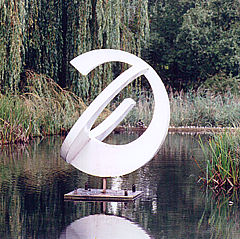
Harlow Town Park

| Home | Park Information | News & Events | Users Group | Site Map | Links |
|---|
 |
Harlow Town Park |
 | |||||
| |||||||
|
Park Information
Introduction & Map
|
Features of the Town ParkSpecimen GardensThe Specimen Gardens, located along the frontage of Park Lane, were originally planted to show a range of trees and shrubs which can be established in the town area. The plantings are used to give an example of the eventual size mature specimens can reach. Amongst the collection there are some notable firs, spruces and oak. Water GardensThe Water Gardens, once cress beds, now form a popular feature of the park attracting wildife and visitors alike. The Water Gardens are fed by naturally occurring springs and a stream which flows through Spurriers to the river Stort. The water plant gardens and rockeries provide an opportunity for a wide range of aquatic and herbaceous plantings. In the area there is a small woodland known locally as Peace Wood, and small alcoves and valleys planted with species of flowering trees and shrubs including rhododendron and hydrangea. The water pools are popular with children who come to enjoy the collection of fish and the abundance of birdlife. The centrepiece is a sculpture called Pisces by Jesse Watkins. SpurriersSet in the centre of the Town Park, is the large Victorian house which gives its name to the surrounding 8 acres of parkland. The formal gardens feature an avenue of rose beds, and informal island beds of herbaceous shrubs and grasses. Of the many specimen trees look out for the ginkgo, a prehistoric tree with leaves similar to the maidenhair fern. Behind the skating rink (currently skate board area) are several examples of snake and paper bark maples. Flowing through the park past the bandstand is Spurriers stream along which are planted several species of alder and willow. Arid GardenTo the east of School Lane is the area known as the Arid Gardens, which features valleys and open natural parkland. The gardens are planted with a wide collection of specimen trees and shrubs. A walk through the cherry tree collection from School Lane car park to Jackson Hill during the early to late spring is rewarding. Across from the cycle track are the Heather Gardens and shrub beds planted in the deep landscaped valleys. To the right of the main path is the most recent addition to the gardens, the Newfoundland area. Turning left off the main path and down into the hollow is a small avenue of hawthorns/crab apples. Ascending up the slope and across the cycle-track again the circular route leads back to the car park. Newfoundland GardenThe Newfoundland Garden, near Jackson Hill in the Arid gardens, was planted in 1997 to commemorate the double anniversary of Harlow New Town's 50th anniversary and the 5OOth anniversary of the discovery of Newfoundland by the explorer John Cabot, in 1497. The garden area occupies a landscaped valley which is planted with native trees such as balsam fir, white spruce, mountain ash, white birch, red maple and red pine. The trees are deliberately planted to reflect the changes in vegetation as you progress up the hill. Planted around the pink granite boulder is a collection of native shrubs including crackerberry, cinquefoil, Canadian yew, common and trailing juniper. In spring the crown of the hill is ablaze with yellow daffodil. |
Top | Home | Park Info | News & Events | Users Group | Site Map | Links
© Website design by Tomlins Web Designs. This page written by A.G.Tomlins.page URL: www.harlowwildlife.org.uk/tpug/features.htm